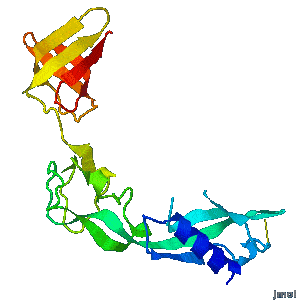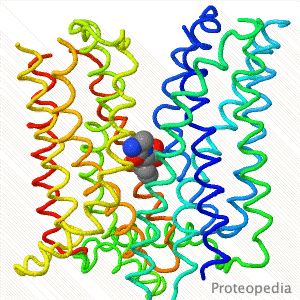Main Page
From Proteopedia
| Line 1: | Line 1: | ||
<table id="tableColumnsMainPage" style="width:100%;border:2px solid #ddd;border-collapse: collapse;table-layout: fixed; "> | <table id="tableColumnsMainPage" style="width:100%;border:2px solid #ddd;border-collapse: collapse;table-layout: fixed; "> | ||
<tr><td colspan='4' style="background:#F5F5FC;border:1px solid #ddd;"> | <tr><td colspan='4' style="background:#F5F5FC;border:1px solid #ddd;"> | ||
| - | <span style="border:none; margin:0; padding:0.3em; color:#000; font-style: italic;"><b>Because life has more than 2D</b>, Proteopedia helps to understand relationships between structure and function. <b>Proteopedia</b> is a free, collaborative 3D-encyclopedia of proteins & other molecules.</span> | + | <div style="top:+0.2em; font-size:1.2em; padding:5px 5px 5px 10px; float:right;">'''''ISSN 2310-6301'''''</div> |
| - | + | ||
| + | <span style="border:none; margin:0; padding:0.3em; color:#000; font-style: italic; font-size: 1.2em;"> | ||
| + | <b>Because life has more than 2D</b>, Proteopedia helps to understand relationships between structure and function. <b>Proteopedia</b> is a free, collaborative 3D-encyclopedia of proteins & other molecules.</span> | ||
| + | |||
| + | |||
</td></tr> | </td></tr> | ||
Revision as of 14:54, 18 October 2018
|
ISSN 2310-6301
Because life has more than 2D, Proteopedia helps to understand relationships between structure and function. Proteopedia is a free, collaborative 3D-encyclopedia of proteins & other molecules.
| |||||||||||
| Selected Pages | Art on Science | Journals | Education | ||||||||
|---|---|---|---|---|---|---|---|---|---|---|---|
|
|
|
|
||||||||
| Other Selected Pages | Featured in Art | Featured in I3DC | Featured in Education | ||||||||
|
How to author pages and contribute to Proteopedia Who knows ... |
How to get an Interactive 3D Complement for your paper |
Teaching Strategies Using Proteopedia |
|||||||||
| |||||||||||




